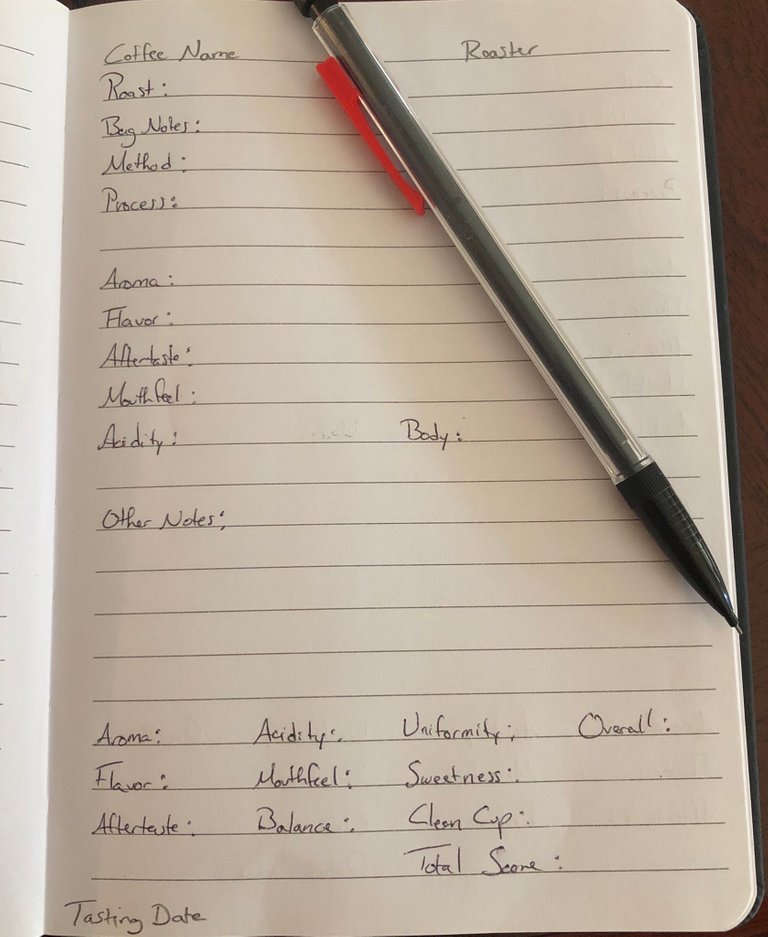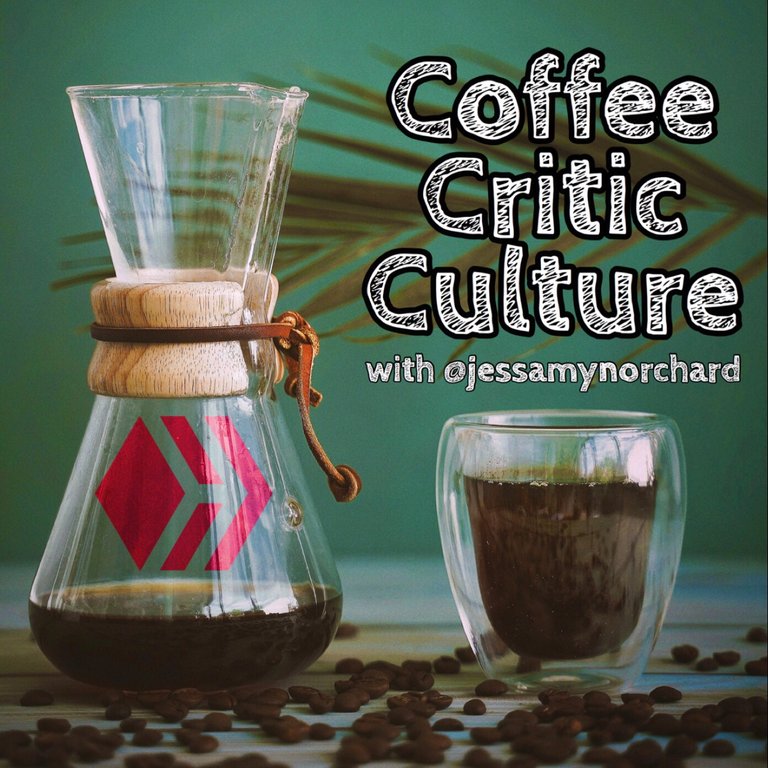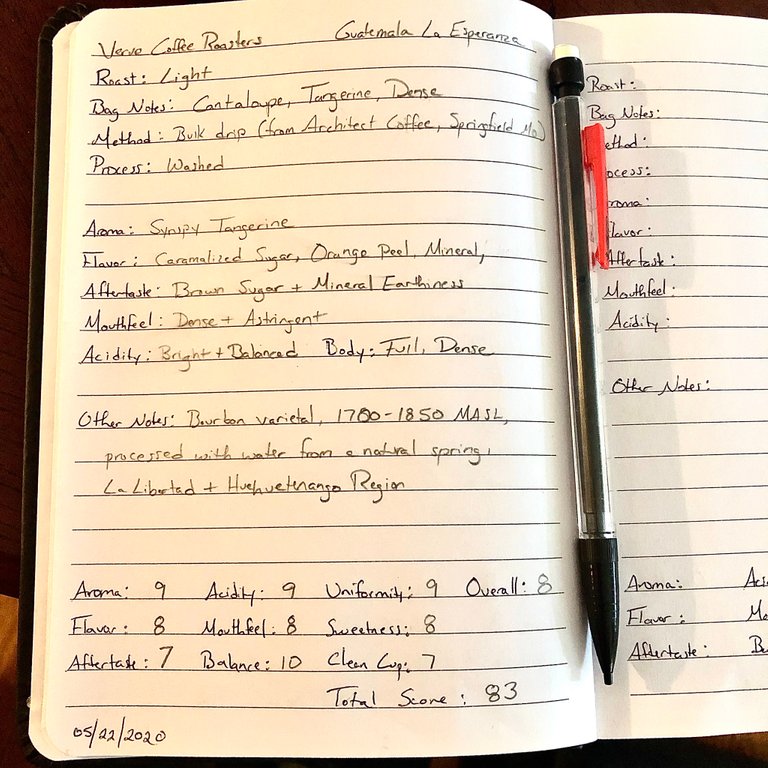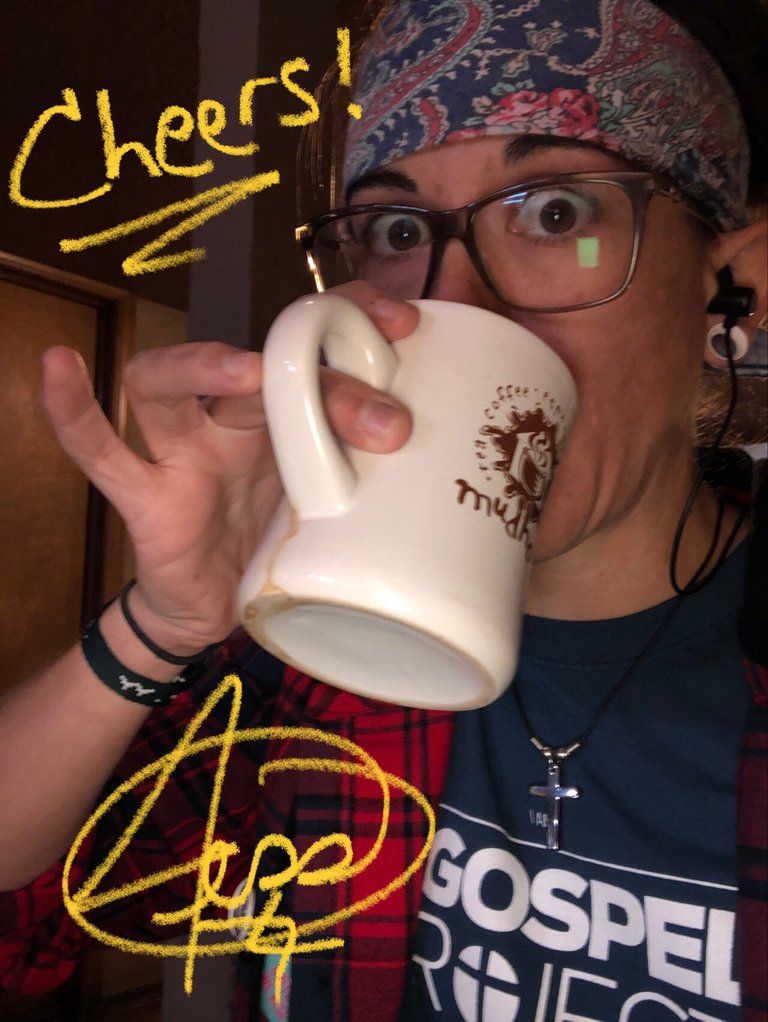
A few months ago, I decided to start keeping a coffee journal for my coffee tastings. I wanted to keep track of the coffees I’ve tried, and I also wanted to try to nail down my favorite coffees not only by roaster, but also by region—it’s been so much more informative, though.
I never realized I’d enjoy it so much, and what the journal has done for my appreciation of coffee and all the work that goes into producing an excellent cup is really more than I could have hoped for in the process.
I try a lot of coffee, so having a standard method to go about my tastings was the first thing I wanted to nail down. I did some research and consulted a great coffee taster’s flavor wheel to get started on flavor and aroma standards, and then I sourced the best practices and protocol for cup scoring from the Specialty Coffee Association (SCA).
If I’m going to embark on a project, I want to do it the proper way. * shrug *
In my journal, I gleaned from the official SCA cupping score sheet which I modified to my own general journaling preferences. I don’t always have the chance to try multiple cups of this coffee before I score, and even though I try to do that—some coffee that I try I really want to add to my tasting journal with only one cup—I want to remember what I’ve tried, so I do the best I can with what I have.

This is how I format my journal. It’s by no means super official or anything, but it’s worked well for me. I utilize the guides mentioned above with the flavor wheel and scoring guides to assist this process. The top section is used to describe the elements of the coffee, and the bottom section is scored from 1-10 and then averaged for a total score out of 100. In the Other Notes section, I add details about the elevation, varietal, or other notable farm-level elements that add to the characteristics of the cup.

I hope these resources help to shed some light on keeping a coffee journal, and if you’re also interested in starting one of your own, I hope these links help point you in the right direction.
Another thing—I’ve found that since keeping a journal, my appreciation for coffee has increased (didn’t even realize that would be possible), and I like knowing why I dig certain qualities in coffee.
This also really helps to take the guesswork out of finding or picking out a coffee that you’ll love. There’s a lot of coffee options out there.
If you’re frustrated with finding the right coffee, knowing what specific elements about coffee you like really helps pick out new ones. I like trying new coffee and learning about new flavors, but I also realize that isn’t everyone’s game. Some folks like to try coffees that they already know they’ll like, and this process makes that much easier. A little effort spent in nailing down what you love about a particular cup will help you find another, and save you money in that process.



Now, let’s review some coffee, shall we?
On Fridays, we pick up a to-go cup of coffee from Architect Coffee Co. in Springfield, Missouri. Architect exclusively serves Verve Coffee Roasters coffee, and it’s a nice treat to have a couple of shops locally that serve nationally-noted and high-ranked coffees.
Another shop in South Springfield that serves nationally-ranked coffee is One Drop Coffee Company. They’re located in Farmers Park and serve Onyx Coffee Lab’s coffees—another of my fave roasters.
I’ve said it before, but it’s such a good feeling to support local and also be able to access some premier coffee. I’m glad Springfield has the options it does.
Architect usually has a couple of options for their drip coffee. They most typically offer Verve’s Seabright House Blend, and a single-origin option of their choice.
Today’s single-origin option was one of the new offerings from Verve, which is the Guatemala La Esperanza, and I was super stoked to get to taste it today.
This coffee consists of exclusively Bourbon varietal coffee cherries, and is grown on a steep hillside at 1700-1850 meters above sea level in the La Libertad and Huehuetenanga Regions of Guatemala.
The farm where its grown also washes the coffee using water from a natural spring directly adjacent to it. The mineral qualities from this native water source really come through in the nose and the taste of this cup. The mineral attributes present themselves in a slightly metallic, yet dense, astringent quality. I love observing the impact that the natural elements of these farms and washing stations have on the final product. It makes more of a difference than one might initially think.
The company-cupped bag notes on this one were ”cantaloupe, tangerine, and dense.” In my tasting, the tangerine really shined in both the aroma of the coffee (smelled straight like tangerine), and in the taste. I thought the actual flavor more closely reminded me of orange and orange peel, but the general orange citrus flavor was still quite prominent.
However, that citrus acidity and sweetness were also balanced out with dense, caramelized brown sugar notes in both aroma and flavor. This cup was super balanced, and I scored it at a full 10 in regard to its balance. I’m not sure I’ve had a more balanced cup of coffee. It’s not my highest-scoring coffee to-date, but it’s a super solid cup that’s incredibly balanced.


If you’re interested in more coffees from Verve (because they’re a super solid and consistent roaster), check out my blog posts about the Burundi Kamira, and my pour-over how-to post using the same blend.

I’m @jessamynorchard, and I’m a second-wave trained barista with years of experience selecting, preparing, drinking, and appreciating coffee. I live in Springfield, Missouri, where I am a full-time looping musician, podcaster, and blogger, and I love sharing my passions with folks who are eager to increase their own appreciation of the intricacies of coffee.

Follow me @jessamynorchard on Hive, and happy coffee tasting!

@artemisshares Thank you so much for the curation!! I appreciate it!!